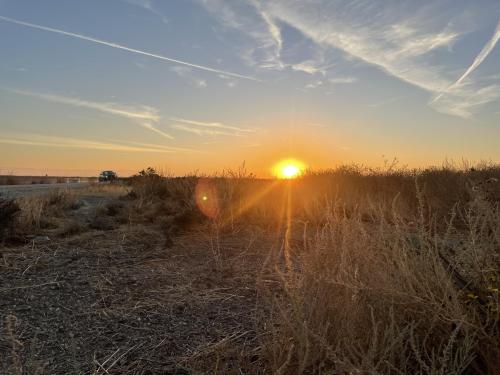
My First Response
Quick Summary
- Frankie discusses her first response with the OWCN
Although not an oil spill, my first response is definitely one to remember. I was 4.5 months into my new position when the OWCN Management Team took on the Tulare Lake: Avian Botulism Response… and I would be lying if I said I wasn’t nervous.
Really the nerves centered around how I would fit into this wildlife emergency response world. Of course, I was welcomed in with open hands only just a few moments into the response… what was I thinking. At first, I was assisting with some major onboarding and personnel coordinating. Then my role shifted to a lot of time on-site at the Kern National Wildlife Refuge, assisting with daily center needs and continuing the in-person personnel coordinating. I was uniquely able to take part on both sides of this and it really allowed me to see the entire picture so well.
A few of my firsts included creating agreements with Member Organizations and working on a small team to ensure everyone’s needs were met.
Some other firsts include holding a coot… and then holding a lot of coots (and so many others). Managing expenses, working in a makeshift center, long days and the most time I’ve ever spent away from my kitties.

I was able to apply the skills learned at Oiled Wildlife Specialist Training – Intake and Processing. Any time I get to apply practiced skills on a real animal is nerve wracking and exciting, and then when you succeed it's the best feeling ever. I wasn’t alone, many of the responders were new to gavaging, administering fluids both Subcutaneous and through IV (intravenous). I did not leave the daily animal care world too long ago and getting the chance to participate in critical care really re-ignited my reasons for joining this team. The intake to release timeline was relatively quick, species dependent, of course. This allowed for us to see, in real time, how avian botulism can really down a bird. With a lot of fluids and attention to detail we also were able to watch hundreds of birds be released on-site, the team gained a lot of skill in banding and post release observation. It was fun, and heartwarming.

I was also able to see the work that goes into maintaining a facility; I got to know our gear, vehicles & western shelters while working the ever-evolving site at the Kern National Wildlife Refuge. Although I was not totally involved in building up the site, I definitely have a better understanding of the process and an appreciation to those who built A LOT of caging in the September heat.

Lastly, this was my first time to really meet new folks within our OWCN Network. We had 70 responders travel 3-5 hours, work in not the most desirable conditions and live in hotels. Yet each and every person brought great attitudes, patience and the dependability to keep the operation moving smoothly. It was so wonderful to connect and form bonds with so many great folks.

We may have been in and around the conditions that come with working in the Valley; Valley Fever, rattlesnakes, and very hot and dusty days. On the flip side, we also got to start and end each day with beautiful sunrises and sunsets and sometimes that little peaceful moment is all we needed to keep our spirits high.
As time has passed and I have taken some time to recuperate, I am so thankful for this first opportunity. It was a lot of work, and a new type of routine to work through.
Nerves aside and exhaustion sidelined for a moment, this was a wonderful experience I wouldn’t have asked for a different situation.
To hear more about the OWCN's Tulare Lake Avian Botulism response we are hosting a town hall on January 24th at 12:00pm PST. Check out your responder profile for more information!

Frankie Lill
Wildlife Planning Specialist

